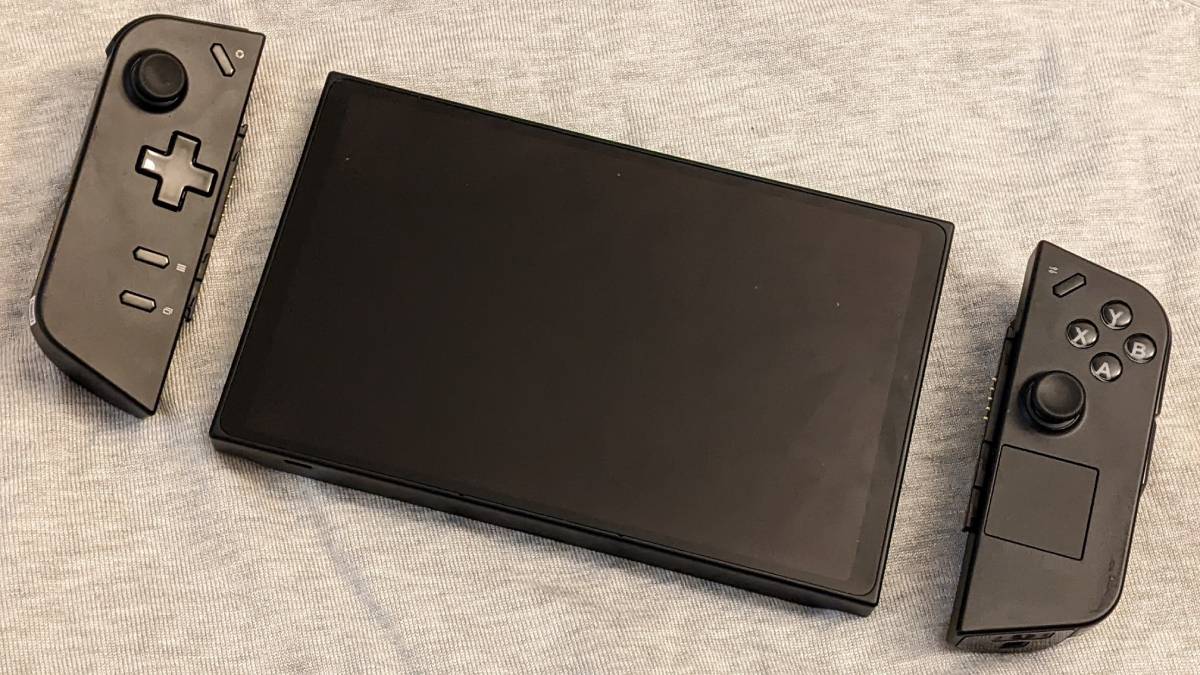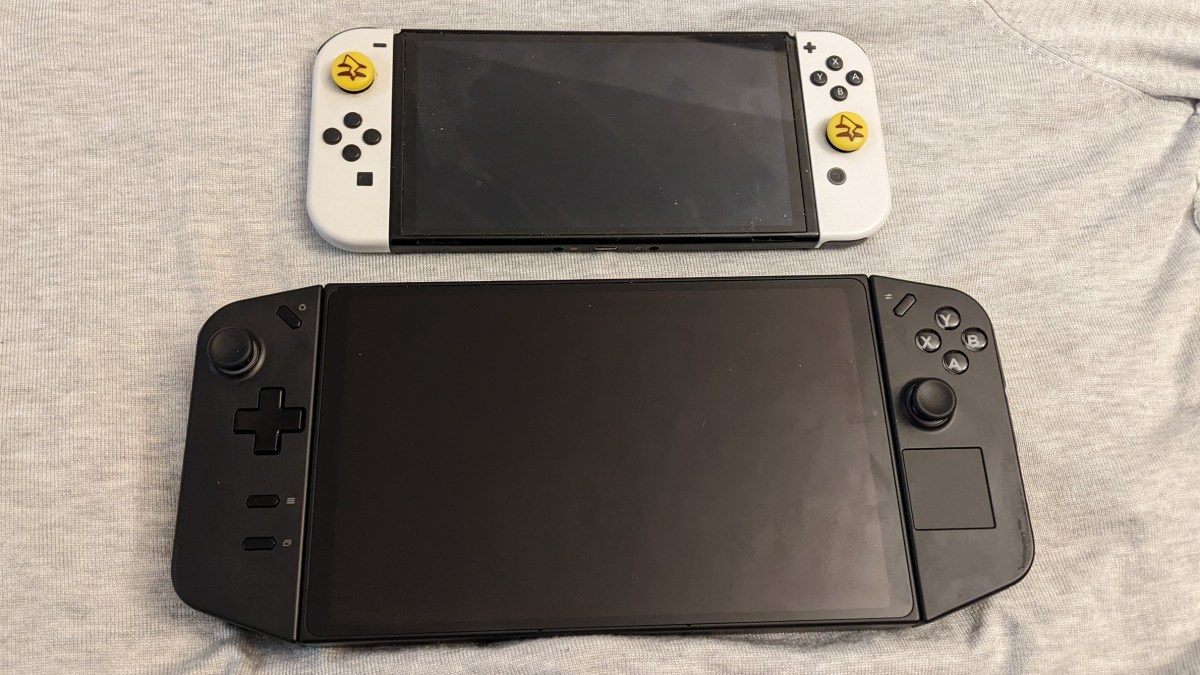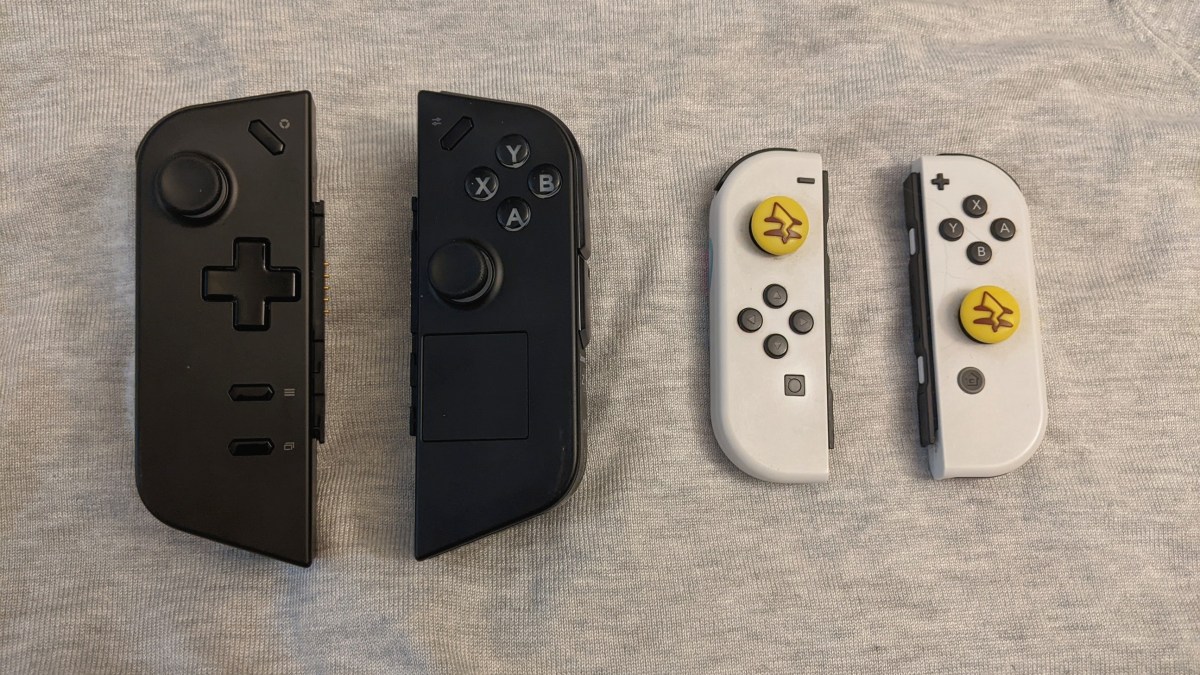Since the Steam Deck launched, we’ve seen a lot of companies notice the demand for handheld gaming PCs and enter that sphere. Quality and success varies. In the case of Lenovo, we can clearly see the company pulling inspiration from not only the Valve Steam Deck for the Lenovo Legion, but the Nintendo Switch. The result is a device that I adore not only because it handles anything I throw at it, but because it allows me the comfort of different playstyles when using it.
Right from the outset, the appearance of the Legion Go gives the impression Lenovo is targeting additional audiences and trying to do more with its construction. It’s larger than a Steam Deck or Switch, with an 8.8 inch GHD screen. It looks absolutely gorgeous, and it really does resist fingerprints. Yes, after two weeks using it I did start to notice an occasional smudge, but those were easily cleaned away. The brightness settings allow it to look incredibly crisp, and there’s admirable accuracy both when using the touch screen for controls or when seeing responsiveness when using the included controllers due to 144Hz refresh rate.

It also handled any game I threw at it easily and without issue. This wasn’t entirely unexpected. After all, it has 16GB of RAM available at the outset, has an AMD Ryzen Z1 Extreme processor, and an integrated AMD Radeon GPU. While in some cases I did need to sacrifice running on the highest settings to ensure optimal gameplay, such as in the case of Baldur’s Gate 3 or Dragon Age: The Veilguard, I didn’t have an issue with any game I’d consider demanding. Grand Theft Auto V? It ran it like a champ. It can handle it. The Witcher 3 was working great on it. Any HoYoVerse title like Honkai: Star Rail or Zenless Zone Zero? Just perfect.
I did find I didn’t really use the Legion Space software as much as I’d expect. This is the hub that will tap into titles you install on a Legion Go across storefronts and apps. That isn’t because it was necessarily a bad option. Rather, Steam Big Picture Mode worked too well on the handheld gaming PC. Since the majority of my library was there and I already had filters in place, that ended up being my go-to resource for the system. However, I will say that I appreciated the Legion L-key shortcuts for things like easily accessing the virtual keyboard or taking screenshots.
The Lenovo Legion Go controllers are another element that impressed me. At a glance, you have everything you expect and they almost resemble a Switch Joy-Con, touchpad that acts like a laptop trackpad aside. But once you actually have them in your hands, you can feel the extra mouse wheel, two buttons on the back of the left controller, and four buttons on the right. These are also easily programmable via the Legion R button, which brings up quick settings at any time. Though even more reassuring were the Lenovo Legion Go Hall Effect joysticks, especially since I’ve been through three pairs of Switch Joy-Cons and sort of feel like my OLED model’s left one is about to go again.
The versatility and ease that came with using different options for the Lenovo Legion Go also helped me get even more comfortable with it. When I use a Nintendo Switch, I always play in Handheld Mode. The weight of the system, which is about two pounds, is a lot when you’re holding it in different, potentially awkward, positions. This isn’t to say the controllers or designs are bad. It’s quite comfortable for its size. I just found it got a bit heavy. So, going full Switch Tabletop Mode with it was a godsend. I’d often prop it up with its stand on the bed or couch, get cozy with a controller in each hand, and play Fields of Mistria or Honkai: Star Rail for a few hours. It wasn’t even uncomfortable doing so with Baldur’s Gate 3, though I found a USB-C to HDMI cable and connecting it to a TV was a much better way to enjoy that, since I could also then charge it.


Those detachable controllers do feel quite solid and comfortable when used independently of the system. It took a minute for me to feel comfortable detaching the controllers from the Lenovo Legion Go, given I’m used to the slide and detach method of the Nintendo Switch. However, they’re easy and comfortable to hold, just as Joy-Cons are. I’d say they’re even a bit better, due to the larger size. Though I’ve found the right controller’s track pad is a bit difficult to use when they aren’t attached to the system. The battery life is also quite good, as they’d outpace the actual system. If detached, I could use them about twice as long, if not a bit longer. I would recommend making sure you head them “click” back into place when reattaching them, however, as I did neglect to do that the first time I used them and had the left side feel a bit wobbly as a result.
Speaking of the battery life in general, the Lenovo Legion Go did surprise me a bit. Not in terms of length. No, as expected, it eats through battery power fairly quickly. I adjusted my Quick Settings in the push-the-Legion-R-button-and-you’re-there configuration center to allow me to spend about a half an hour on my HoYoVerse game dailies and about three hours on Fields of Mistria time. But I expect to get a maximum of four hours out of it, depending on the title. Also, it would only take just over an hour, hour and a half to get enough energy to start playing again and be at almost 70% if I charged it while the unit was turned off, so I’d never be out of the game for too long.
In general, I’m a really big fan of Quick Settings. When normally playing on a PC, I never really mess around much with settings. Here, I find I do hop into Quick Settings more often to adjust things based on the game. Primarily, it is because of the desire to possibly extend play sessions for less-demanding indies, such as the aforementioned Fields of Mistria. But I also appreciated being able to have that control if I noticed the back of the unit feeling a bit hot in Dragon Age: The Veilguard or other games too.
I have noticed a few minor quirks to the Lenovo Legion Go during my time with it, though. One is that it constantly prompts me with a message saying I need a “new app to open this ms-gamebar link.” Checking online left me wondering if it was tied to needing the Xbox app, only to find I already had it. The other is that if an update is needed to the system, drivers, or controllers, the Legion Go will do it without any regard to what I’m actually playing. (Good thing I was in the middle of preparing to roll a die for a Baldur’s Gate 3 decision when that came up one time!) But again, that was a bigger issue once I first started setting things up out of the box, and it hasn’t been come up often after getting settled.
I absolutely adore the Lenovo Legion Go, especially coming to it as a Switch owner, and appreciate the power and versatility it provides when compared to a Steam Deck. The different options available when playing, such as one that involves popping out the stand and detaching the controllers, make it easy to get comfortable and avoid fatigue from its weight when gaming sessions run long. Of course, the comfort that comes from knowing I can download any recent game to it and know it will run is equally valuable. It’s the freedom that comes from this handheld that makes it such a joy to use.
Lenovo Legion Go is available nationwide.
Experience handheld gaming perfection with console-level performance and graphics, a super vivid touchscreen display, controls that will keep you at the top of the leaderboards and so much more.
I absolutely adore the Lenovo Legion Go, especially coming to it as a Switch owner, and appreciate the power and versatility it provides when compared to a Steam Deck.
- Make sure you have the charging cord on a hard surface, as the charger can get extremely hot if left sitting on cloth or carpet.
- I’d always forget the trackpad is on the right controller! Don’t make my mistake, as it can make it much easier to manage things on the desktop’s home screen.
- I’d say spend the first two or three hours just getting everything set up and not getting invested in games, as that was prime time for initial driver updates and other changes.
- The Quick Settings default modes are fantastic and totally fine for most gaming sessions.
- Specs: Windows 11 Home, AMD Ryzen Z1 Extreme processor, AMD Radeon GPU, 16GB RAM, 1TB SSD, 8.8” 16:10” 144Hz QHD touchscreen.


Published: Nov 9, 2024 09:00 pm